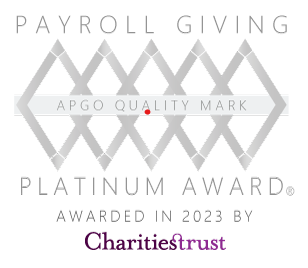The data divide – the difference between a good sustainability strategy and a great one?
by Tara Luckman
As the Co-Founder and Director of Flourish CSR, and the former Head of Sustainable Sourcing for ASOS, I’ve been working on the challenge of sustainability in the textiles and retail industry for much of my career. During that time, I have seen consumers demand more from brands and retailers – more responsible sourcing, more transparency and more proof around sustainability commitments. This trend has been accelerating, and businesses are responding.
It worries me that the arrival of #COVID-19 pandemic could derail this progress. It has brought new and, for some brands, overwhelming pressure – financially and operationally. And so, many of us wonder – will the industry now forge on or row back on its progress to date?
To find out the U.S. Cotton Trust Protocol, an organisation I advise, partnered with the Economist Intelligence Unit to survey 150 fashion, retail and textile executives in Europe and the United States to determine, with their industry at a crossroads, whether their sustainability work will be affected by COVID-19.
The result is the ‘Is Sustainability in Fashion?’ report, which gives us direct insight into what CEOs, CSOs, and other top executives at some of the world’s leading brands are thinking now about sustainability.
First, the good news – the survey and accompanying interviews found that business leaders in the sector are still putting sustainability practices first, despite the pandemic. In total, 60% of those surveyed listed implementing sustainability measures as their top strategic business objective, second only to improving customer experience, ranked in first place by 64%.
Further good news is the level of businesses commitment to sourcing sustainably produced raw materials – the top sustainability objective selected by 65% of those surveyed. Equally, 58% said they were developing an environmental sustainability strategy with measurable targets. And 41% of leaders reported their business is investing in new technology like blockchain and 3D printing to drive sustainability.
On the other hand, only 53% of the business leaders said they were collecting data from across the business and in the supply chain to measure performance. When it comes to specifics, 45% of businesses said they are not collecting data on greenhouse gas emissions and 41% are not collecting data on the amount of water and energy being used to produce raw materials. More worryingly, 38% said they are not collecting data on worker rights / workplace health and safety in the supply chain.
Here the size of the business makes an impact – those earning more than $250m in annual revenue performed better: overall 63% of respondents from larger businesses said that they are collecting data from across the supply chain and business to measure sustainability, vs 47% from smaller businesses. The number widens when comparing data collected on greenhouse emissions: 78% for larger businesses compared to 40% for smaller ones.
Together, these findings led me to conclude that business leaders are continuing to press forward with sustainability efforts, but many are lacking a key component for making informed strategic decisions: data.
Data allows an organisation to really understand its performance in a given area. It enables assessment, benchmarking, target setting and strategy forming to take place – without it you cannot quantify what you need to do, or measure and evidence your success.
Getting to a stage where brands have access to the quality data that they need, across the full spectrum of sustainability issues, will be challenge. But increasingly third parties like the U.S. Cotton Trust Protocol are supporting brands by taking on that on – collecting and processing quantifiable and verifiable data on their behalf and providing meaningful insights that brands can use.
Of course, data cannot wave a magic wand – but it can bring clarity, and in such a complex supply chain, this is exactly what this industry needs.
To find out more about this finding and others, you can read ‘Is Sustainability in Fashion?’ here.





